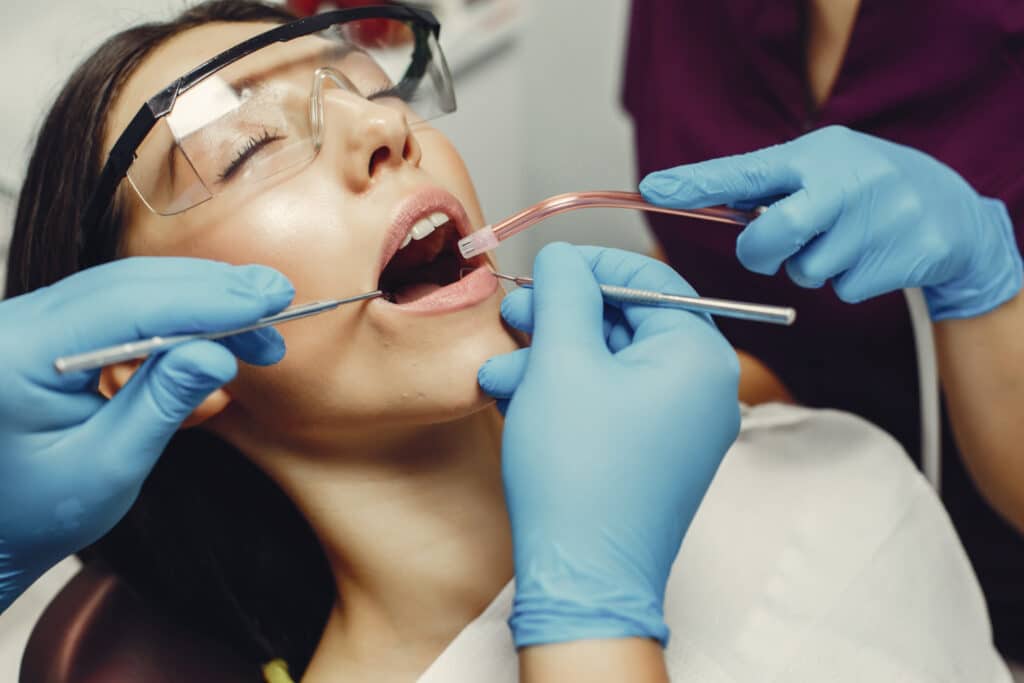Going to the dentist can make many people feel nervous or scared. If you’re one of those people, you’re not alone. Dental anxiety is common, and it can keep you from getting the care you need. Fortunately, sedation dentistry offers a way to help you stay calm and relaxed during your dental visits.
Sedation dentistry uses medication to help patients feel more comfortable during procedures. Whether you need a simple cleaning or more advanced treatments, sedation can make the experience much easier. It helps you feel at ease, so you don’t have to worry about discomfort or pain.
In this article, we’ll explore what sedation dentistry is, its benefits, the different types of sedation used, and how you can prepare for your appointment. With the right information, you can approach your next dental visit with confidence and peace of mind.
What Is Sedation Dentistry?
Sedation dentistry involves using medication to help patients relax during dental procedures. It’s a great option for people who have a fear of the dentist, a low pain threshold, or who need a lot of dental work done at once. The medication used can make you feel sleepy or completely unconscious, depending on the type of sedation.
There are different levels of sedation. Minimal sedation makes you feel relaxed but still awake. Moderate sedation, sometimes called “conscious sedation,” may make you slur your words and not remember much of the procedure. Deep sedation puts you on the edge of consciousness but you can still be awakened. General anaesthesia makes you completely unconscious.
The goal is to ensure you have a comfortable and stress-free experience. Your dentist will discuss your options and help you choose the level of sedation that’s right for you. Whether it’s a simple filling or a more complex procedure, sedation can make it much easier to handle.
Benefits of Sedation Dentistry
Sedation dentistry offers several important benefits that can make your dental visit a more pleasant experience:
1. Reduces Anxiety:
Many people avoid the dentist because of fear or anxiety. Sedation helps you stay calm, making it easier to get the care you need.
2. Pain Relief:
Sedation keeps you comfortable during the procedure. You won’t feel pain or discomfort, which is especially helpful for more intensive treatments.
3. Gag Reflex Control:
Some people have a strong gag reflex that makes dental care difficult. Sedation can relax your muscles and reduce the gag reflex, allowing the dentist to work more easily.
4. Fewer Appointments:
Because you’re more relaxed, dentists can often complete more work in a single visit. This means fewer trips to the dentist, saving you time.
5. Memory Reduction:
For those who have dental phobia, sedation can help you remember little or nothing about the procedure. This reduces the fear for future visits.
6. Comfort:
Sedation helps you feel comfortable for long procedures. You can rest easily while the dentist takes care of your teeth.
Choosing sedation dentistry can help you overcome your dental fears and make the experience much more manageable. It’s a valuable option for anyone who wants a stress-free and painless dental visit.
Different Types of Sedation Used in Dentistry
There are several types of sedation used in dentistry to help make your visit as comfortable as possible. Here are the main types:
1. Nitrous Oxide (Laughing Gas):
This is a mild form of sedation that is inhaled through a mask over your nose. It helps you relax and is easily adjustable. The effects wear off quickly, allowing you to drive yourself home after the appointment.
2. Oral Sedation:
Oral sedation involves taking a pill, usually Valium or Halcion, about an hour before your procedure. The pill makes you drowsy but still awake. Depending on the dosage, you might fall asleep but can be easily awakened.
3. IV Sedation:
This type is administered through a vein. It works quickly and allows the dentist to adjust the level of sedation as needed. This method is for moderate to deep sedation, where you might not remember much of the procedure.
4. General Anaesthesia:
General anaesthesia makes you completely unconscious. It’s usually reserved for extensive dental work or for patients with extreme anxiety or special needs. This type typically requires you to be in a hospital or special clinic setting.
Each type of sedation has its pros and cons. Your dentist will help you choose the one that best fits your needs and the type of procedure you are having. Your safety and comfort are their top priorities.
How to Prepare for a Sedation Dentistry Appointment
Preparing for a sedation dentistry appointment involves a few important steps to ensure everything goes smoothly. Here’s a checklist to help you get ready:
1. Consultation:
Have a detailed conversation with your dentist about your health history, any medications you’re taking, and your level of anxiety. This helps determine the best sedation option for you.
2. Follow Pre-Appointment Instructions:
Your dentist will provide specific instructions to follow before your appointment. This may include fasting for a certain number of hours if you’re having IV sedation or general anaesthesia. Make sure to follow these guidelines closely to avoid any complications.
3. Transportation Arrangements:
If you’re receiving oral, IV sedation, or general anaesthesia, you will need someone to drive you home after the procedure. The effects can take several hours to wear off, so having a trusted friend or family member with you is important.
4. Comfortable Clothing:
Wear loose, comfortable clothing to your appointment. This makes it easier to relax during the procedure. Short sleeves can also be helpful if you’re getting IV sedation.
5. Plan Your Post-Procedure Care:
Arrange for some time off work or school to rest after your procedure. You might feel groggy or sleepy, so having a day to recover is beneficial.
6. Ask Questions:
Don’t hesitate to ask your dentist any questions you may have. Understanding the process and what to expect can help reduce any anxiety you might feel.
By following these steps, you can ensure a smooth and stress-free experience at your sedation dentistry appointment. Proper preparation helps you feel more at ease before, during, and after your visit.
Final Thoughts
Sedation dentistry provides a wonderful solution for those who feel anxious or uneasy about visiting the dentist. By understanding the different types of sedation and how to prepare for your appointment, you can ensure that your dental visit is as comfortable and stress-free as possible. Whether it’s nitrous oxide for light relaxation or IV sedation for deeper comfort, there’s an option to help you achieve the dental care you need without the fear and anxiety.
At Pickering Dental Services, we’re committed to making your dental experience pleasant and relaxing. Sedation dentistry can help you overcome your fears and get the important dental care your smile deserves. If you’re ready to learn more or schedule your next visit, reach out to Pickering Dental Services today and take the first step toward a calmer dental experience!



